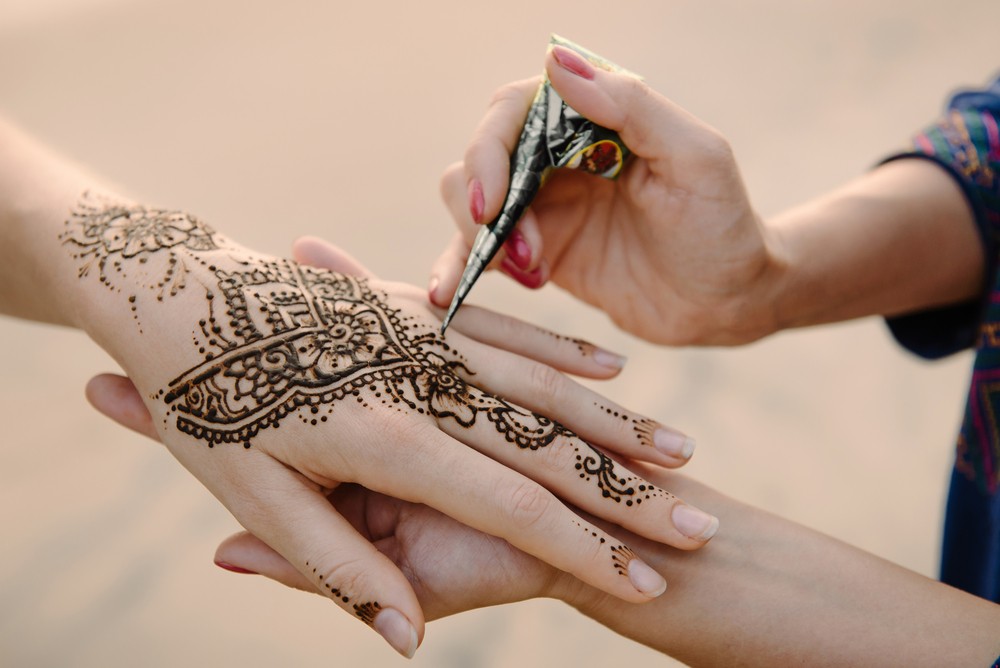Popular Reads
Top Results
Can't find what you're looking for?
View all search resultsPopular Reads
Top Results
Can't find what you're looking for?
View all search resultsHow to use henna safely
Change text size
Gift Premium Articles
to Anyone
Getting temporary henna artwork on one's hands and arms is a popular trend, especially among young girls and children.
But with some horror stories emerging, such as the incident of a seven-year-old girl in the United Kingdom who suffered chemical burns after getting a black henna tattoo while on holiday in Egypt in July, it is best to exercise caution when it comes to selecting and using henna.
Dr Suzanne Cheng, consultant at the National Skin Centre, says: "Many people have the misconception that henna is natural and organic and hence it must be safe. But they fail to realise that this only applies to pure henna,"
Pure henna is a plant that, when crushed, can be used to confer an orangey hue to skin.
"It does not tend to cause any skin problems," says Dr Cheng.
"The majority of skin problems associated with henna use can be attributed to the PPD (paraphenylene-diamine) that is added to pure henna to give it a dark brown or black colour and to hasten drying."
PPD, she explains, is the same substance that is added to hair dyes to darken their color.
Read also: 10 must-see attractions in Dubai
Some people become allergic to PPD. On first exposure, there is usually little or no rash, but upon subsequent exposures, a sensitized person may develop an intense, itchy, blistering rash within 24 to 48 hours.
Dr Cheng adds: "The rash usually settles within one to two weeks of the henna tattoo's removal. However, it can leave very unsightly marks that can take many months to fade."
One of the reasons for the lack of public knowledge on the subject, she says, is that "henna tattooists themselves are unaware of the potential risks of allergic contact dermatitis and hence do not counsel their clients properly beforehand".
So, to ensure a safe and fun experience with henna, there are three things to bear in mind:
- If you intend to buy the henna yourself, always check the ingredients list to see if it contains PPD. If you are getting a henna application at a salon, ask the staff if their products contain PPD.
- If it is your first time getting henna done, then, just like dyeing hair, it is worth doing what is called an open application test 48 to 72 hours before. Apply a small amount of henna product on a patch of normal, hairless skin on the inner forearm, behind the ear or on the side of the neck. If there is redness, itchiness or flaking at the test spot within 72 hours, then you may be allergic to the product.
- Remember that an allergy may develop only after repeated use. This means that a person may have had henna applications several times in the past without problems, but may subsequently develop a skin reaction after repeated exposure.
This article appeared on The Straits Times newspaper website, which is a member of Asia News Network and a media partner of The Jakarta Post











